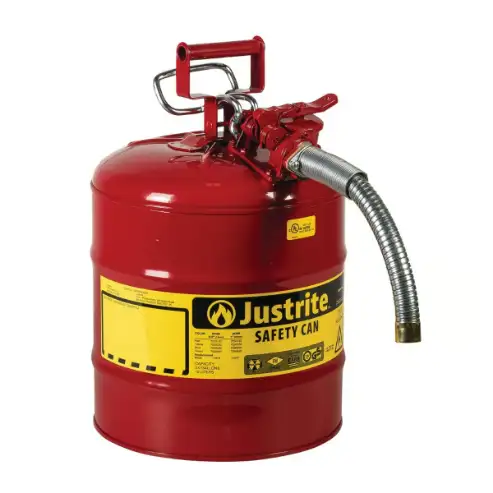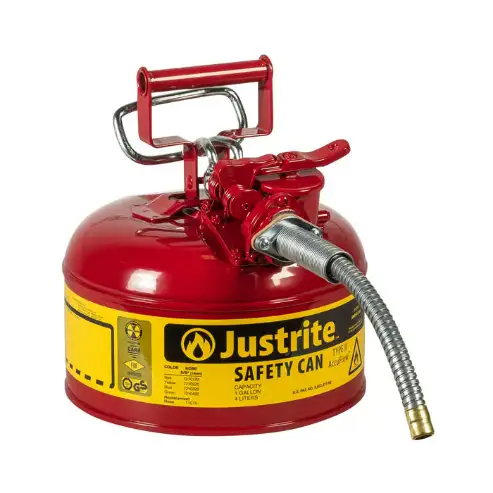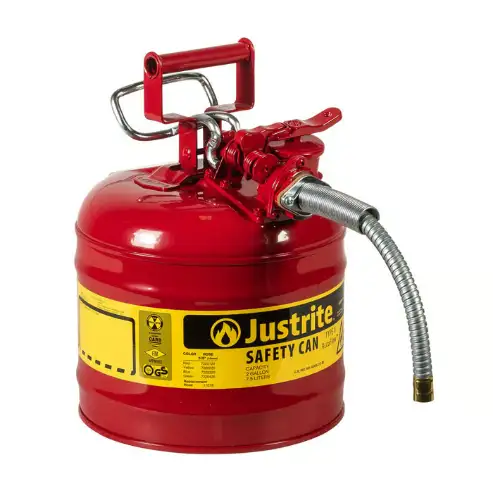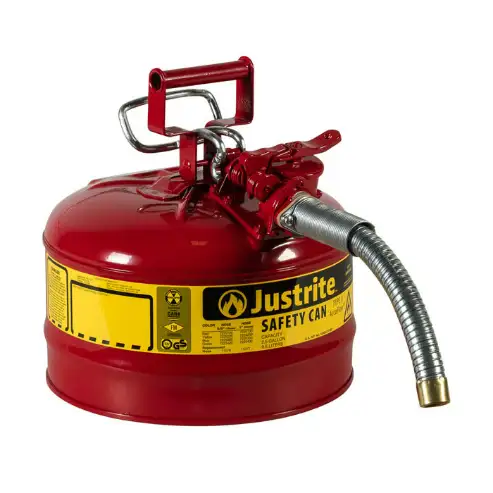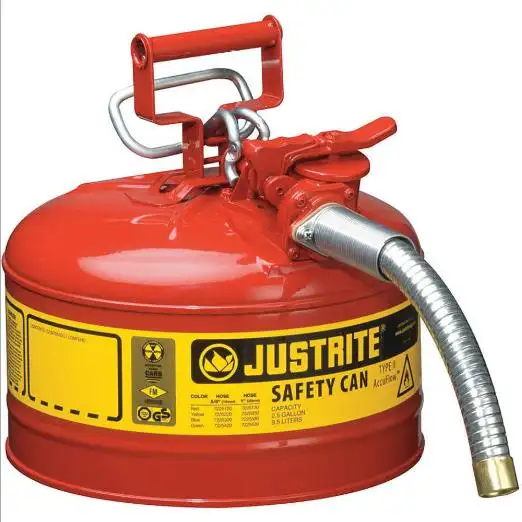Frequently Asked Questions:
Q. What is the difference between Type 2 and Type 1 safety cans?
A. Type II safety cans have 2 openings, one for pouring and one for filling. Whereas Type I safety cans only have 1 opening to pour & fill.
Q. What kind of chemicals can be stored in safety cans?
A. Users can store flammable or combustible liquids like gasoline, kerosene, diesel, propane, isopropyl alcohol and various oils.
Q. What is the capacity of Justrite 7250120 Type II safety can?
A. 5 gallons.
Q. What is the difference between Type 2 and Type 1 safety cans?
A. Type II safety cans have 2 openings, one for targeted pouring and the other with an ergonomically designed lift lever for easy filling. Whereas Type I safety cans only have 1 opening to pour & fill.
Q. What is the advantage of Justrite 7250120 Type II safety can as a flame arrester?
A. The stainless steel flame arrester is an essential safety feature in this safety can as it prevents flashback ignition. It acts as a barrier between the external atmosphere and the contents of the can keeping the environment safe.
Q. How do I install this safety can?
A.
- Select a secure and stable surface to place the can. Ensure it is conveniently located for easy access during dispensing.
- Before installation, ensure the can is clean and free from any debris or contaminants. Inspect the seals and components for any signs of damage.
- Place the can on the chosen surface and ensure it is level and stable. Make sure it is positioned away from any potential hazards or obstructions.
- If the can includes a dispensing hose, securely attach it to the designated outlet on the can. Ensure the connection is tight and leak-free.
- Check if the can is equipped with any safety features, such as self-closing lids or flame arresters. Ensure these features are in place and functioning properly.
Q. How to maintain Justrite 7250120 Type II safety can?
A.
- Regularly clean the plunger and dispensing cans to remove residue and buildup. Use mild detergent and water to wipe the exterior and interior surfaces. Rinse thoroughly and allow the cans to dry before using them.
- Routinely check the seals, plungers and other components of the cans for any signs of wear, damage, or deterioration. Replace any worn-out or damaged parts to maintain proper functioning and prevent leaks.
- If necessary, lubricate the plunger and dispensing cans according to the manufacturer's guidelines. Follow the recommended procedures and intervals to ensure smooth operation.
- When not in use, store the cans in a clean and dry environment, away from direct sunlight and extreme temperatures. Adhere to any specific storage instructions provided by the manufacturer to maintain the cans' quality.
- Periodically inspect the safety features of the cans, such as self-closing lids, flame arresters, and pressure relief valves. Ensure that these features are working properly and free from any obstructions or blockages that could compromise safety.
 Change Country
Change Country

